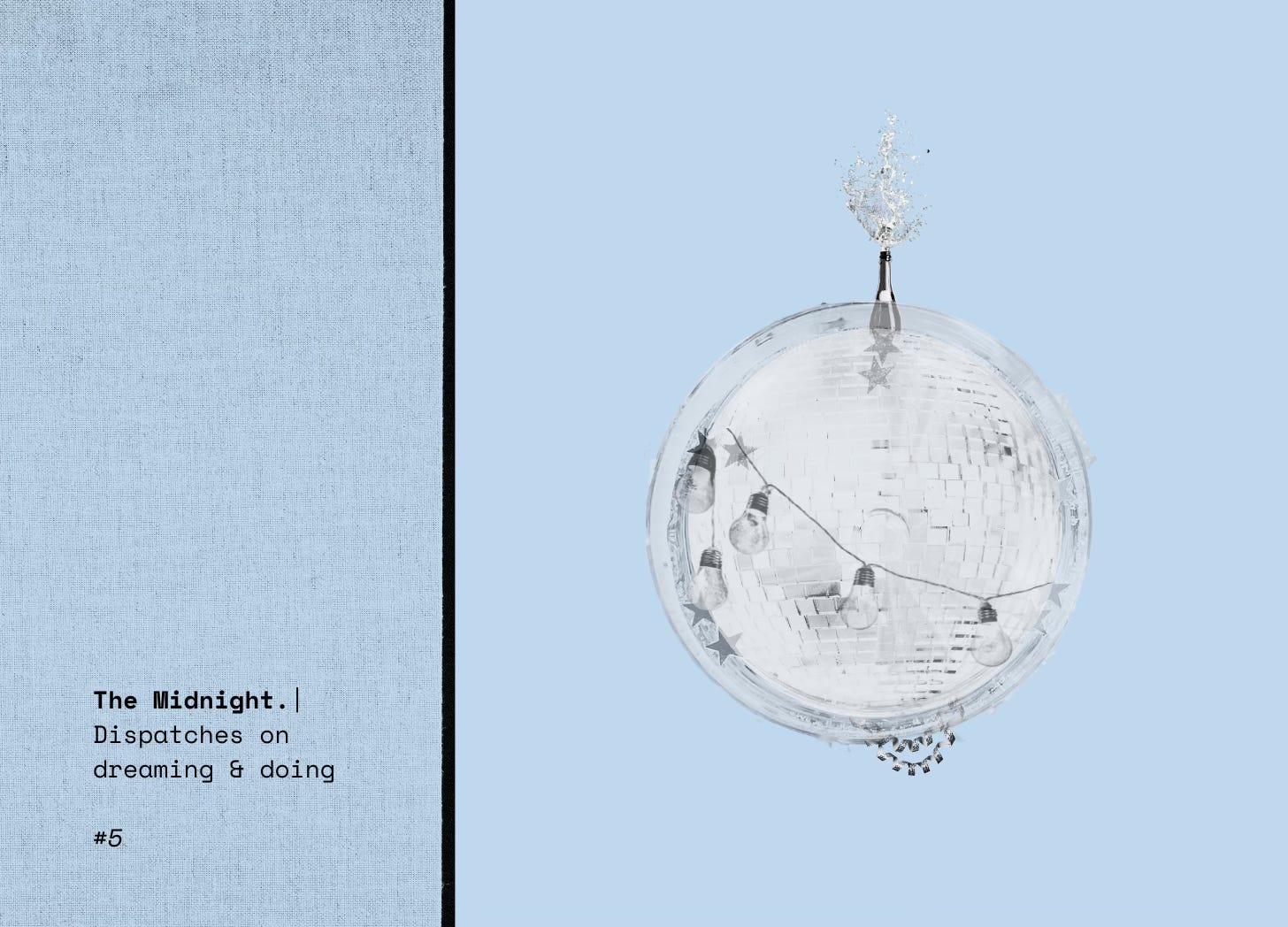Why you must throw a party
On loneliness, last minute invites & anti-fragile socializing
Midnight Voice Memos is a totally independent labor of love. If you enjoy this work please consider becoming a paid subscriber, grabbing a music Rx from the Song Apothecary, or picking up some Unwritten Records.
I am lonely.
I have been telling people this when they ask how I am.
It is an odd and punishing experiment for a person experiencing loneliness. Not least of all because I have found confessing need in a social setting often repels others.
Thankfully for others, I tend to continue the conversation through a sort of armchair anthropologist lens1.
“Something has changed.” I will say “Something has gone missing—a connective tissue, like we are collectively disaggregated.”
Then I will share my working theory as to why.
My working theory is that many of us became socially precious in the pandemic. With moments for gathering scarce, we prioritized the most important people and the most profound experiences, and we held them dearly.
They were so fragile and so impossible to replace—especially because we knew by now we deserved and only wanted those most intentional, meaningful things, not the over-scheduled social slop and lame obligations of the pre-COVID-slowed world.
Many of us were examining the inherited logic of our hyper-consumerist, productivity-worshipping reality. We realized how many things we were doing because we thought we had to do them. Why do those things, we asked, when life is so fleeting and we could just do the things we want. And so, in a moment of deep isolation we winnowed our friendships further.
In the Atlantic article Americans Need To Party More2, Ellen Cushing writes that ‘only 4.1 percent of Americans attended or hosted a social event on an average weekend or holiday in 2023’.
The problem, says Cushing, is that nobody wants to throw parties anymore. And this seems observably true. That sort of social passivity seems a major contributing factor to the lack of connective tissue I am trying to describe.
There are two other things at play:
The first is our increasingly individualistic, low friction lives. It’s just so easy to do only the things that suit us. I’m not certain it is possible to directly counter this tidal force.
The second, and more malleable, factor is the death of the last minute invitation. Pre- March 2020, spontaneous texts to join this or that thing were abundant and innocuous. Post- they are few and far between, scary to send, and strange to receive, especially in this age of so much intentional gathering. The sheer risk of rejection!
Taking all of this together, it’s honestly easy to wonder why we’re not more lonely.
We’re socializing less and with fewer people. We’re doing so within a context that tells us it is possible to have our daily lives be exactly and only want we want them to be—a fact which can make the less frequent socializing less satisfying, somehow.
But life is made more meaningful by discomfort. Awkward parties, conversations with people we find boring, the weird gaggle of folks who show up for a last minute invitation, these things feed us in under-appreciated ways.
Our full participation in these uncomfortable experiences can turn them from something undesirable to something treasured: a new friend, a wild anecdote, a line of poetry.
Our full participation enables a deeper appreciation of those very precious people we winnowed down to in early COVID.
As to how to participate fully? My exploration is on-going, but this week I share some thoughts re: house parties and last minute invitations.
Much love,
Lucy
-
a. Dreaming
Imagining the house party as an anti-fragile social organism
PHOTO SOURCE: The Three Stages Of A House Party.
Perhaps one reason folks host house parties less these days is that as we’ve optimized for meaning, we’ve made our friend groups more specific. It feels less likely our different friends groups will gel. A big, possibly awkward party feels like a big risk.
As I was thinking about this, it occurred to me that big, chaotic house parties could playfully be considered an example of something anti-fragile—a term used to describe entities that thrive in volatility. Parties that mix early birds with night owls, the spontaneous with the planned, loose ties with close friends will tend to morph rather than fizzle as folks trickle in and out. These kinds of parties tend to lead to more parties.
Through this lens, a big, possibly awkward party feels like a risk worth taking. It’s not necessarily easy to achieve. So, a few provocations:
How might you guarantee party longevity via the mix of people you invite: early vs. late arrivers, people who stay the distance, people who just pop in?
What’s a way to ensure everyone meets at least one new person?
How might you use structured activities to keep your party feeling connected and alive?
What’s a way to design an invite list for a party that ‘hosts itself’?
b. Doing
Last-minute invitation experiment
Over the next two weeks, see how many opportunities you can take to make a natural, last-minute invitation. Rejection is likely, but the point is just to make the attempt. I’ll be doing the same.
this repels some, but not as many.
from which I wrenched the subject line and inspiration for this newsletter.






